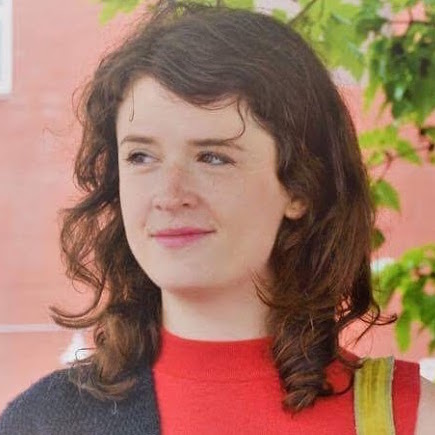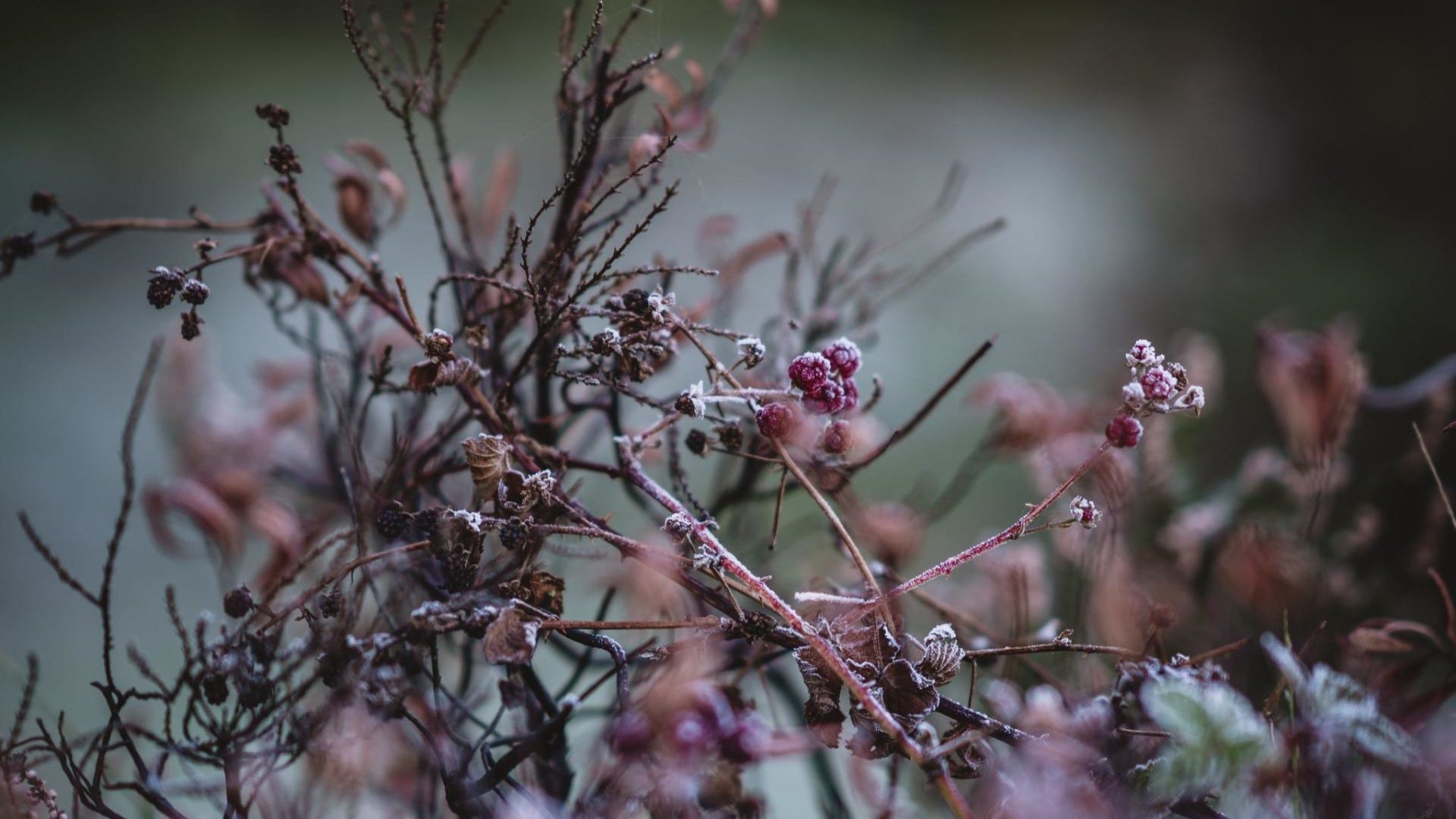As we gather with friends and loved ones for Thanksgiving, may our gratitude turn us outward to the stories that have shaped us and the stories of the places we inhabit. Here, Master of Divinity student Stephanie Johnson writes about the sacred land around us, the narrative of her family tree, and the complexity of the gifts she holds today.
A hill in the heart of the Duwamish Valley
This fall, I wrestled with a stubborn, spiky vine of Himalayan blackberries growing on the side of a 40 million-year-old hill. The Duwamish Hill Preserve is almost four times as old as Tahoma, also called Mt. Rainier; twenty years ago it was almost blown to smithereens with dynamite in order to make room for office buildings. Thankfully, a coalition of indigenous and settler community members teamed up to save the Hill. And today, it is a public preserve where folks go to learn about the cultural, geographical, and ecological histories of the Duwamish River Valley, as told from the perspective of environmental scientists as well as indigenous storytellers.1
To my nonnative eye, it’s a fairly ordinary-looking hill. If I had just driven by it, I don’t know that I would give the Hill a second thought. But without this hill, I learned that our already-ailing Orca population would be in even deeper trouble. Though the Hill stands just 144 feet high (nothing more than a blip compared to Tahoma’s 14,411 elevation), it is an important microclimate for the nearby Duwamish River. The Hill protects the river from storm runoff, helping Chinook salmon—a favorite of Orcas downstream where the river meets the Salish Sea, near The Seattle School—to survive and thrive.
Covered with thorns
All these things were on my mind as I worked with about 20 other volunteers, tending to a plot of soil the size of a classroom. On this foggy, cool morning we were ripping up invasive plants to replace with holly, ferns, and other native species. This plot of land was framed by the hill on one side, and a water pipeline on the other. Just across the water pipeline was the police shooting range; and the whole time we shoveled and wrestled with roots, we listened to the police at target practice. “POP, POP, POP, POP, POP!” I heard the constant sound of gunshots for two hours, over and over feeling a sinking sickness in my stomach. Are they shooting at bullseyes? Human figures? Will those targets one day become flesh, rib cages, heartbeats?
As I struggled with the blackberry vines, sweaty and scraped by thorns, I marveled at how the vines plunged into the soil to create new shoots. Right then, I recognized something about myself. I am an invasive species here. I am not native to this land. The ancestors from my native lands plunged our roots down into this soil. We multiplied and grew aggressively and thickly, so that people, animals, and plants native to this area suffered.
Fast-growing fruits
It turns out, to imagine myself in the story of these Himalayan blackberries isn’t such a terrible stretch. At the turn of the 20th century, eccentric botanist Luther Burbank was busy seeking out resilient, fast-growing fruits and vegetables that could feed a growing urban middle class in North America. On his quest to find a thornless blackberry, he obtained seeds of this huge, spiky, not-so-flavorful variety we see today in nearly every highway ditch, city park, and mountain hike in Western Washington. Troublingly, Burbank’s work with potatoes, daisies, and blackberries led him to envision a human eugenics program that would create “the finest race ever known.” His thesis was that the diversity of immigrant communities would prove a good thing for America over time, if tended to as intentionally as a botanist with his hybridized plants.
One hundred years later, we had a good reason to tear up Burbank’s blackberry plants. We were making room for what they choked out: the snowberries and ferns and hollies and large leaf maples that would invite native animals to return to their home on the Hill. I can’t help but think about what was happening during Burbank’s lifetime: a wave of European immigrants—my ancestors—crossing the borders of our country (illegally and legally, in my ancestors’ cases) with no money and big dreams of a better life in America. As the new arrivals moved into the cities where longer-established Protestant settlers lived, we needed a common origin story to understand ourselves. And so we dusted off the Thanksgiving story and polished out the violence in order to create our own history, our own myths: we belonged here, we have coexisted with Native peoples peacefully from the earliest days.
“We dusted off the Thanksgiving story and polished out the violence in order to create our own history.”
Entangled origin stories
Oglala Lakota Sean Sherman is an indigenous chef from my home state of Minnesota. His recipes feature indigenous foods that tell us something about our nation’s history. “People may not realize it,” Sherman writes, “but what every person in this country shares, and the very history of this nation, has been in front of us the whole time. Most of our Thanksgiving recipes are made with indigenous foods: turkey, corn, beans, pumpkins, maple, wild rice, and the like. We should embrace this.”
In some weird way, I’m the flesh-and-blood hybridized ‘human plant’ that Burbank was referring to, with ancestors from France, Slovakia, Ireland, England, and Sweden. Some of these ancestors arrived early enough to actively move onto the land upon which Sean Sherman’s Dakota ancestors had just been driven out. Some came later, like my Slovak grandma’s parents. She has living memories of being called “a damn Polack” and her schoolteacher teasing her in front the class because her family could not afford a spare penny for pencils. I am living a life that my grandma assures me was beyond her parents’ wildest dreams.
POP, POP, POP, POP, POP. But I’m also the blackberries—one of many middle-class Americans who lives on stolen land. In my hometown of Bloomington, the land belonged to the Dakota as their ‘genesis’ before we made it the site of their genocide. In Seattle, I live on the land of the Duwamish people who are still denied federal recognition of their tribal status, and therefore the same rights and benefits as other Native tribes. But they have been here since around 8,000 B.C.E., with oral traditions bearing cultural memories back to the last Ice Age. Duwamish artifacts within Seattle’s city limits date to the 6th century C.E., when St. Benedict of Nursia founded his first monastery in Italy and the legend of King Arthur was born in Britain.
It is here that Salish tribes have sacred origin stories, including stories about the Duwamish Hill Preserve. Their oral traditions testify that indigenous communities have known for generations what settler ecologists have only learned more recently: that the Hill is vitally related to the health of nearby water systems. The Hill is therefore important to the lives of all humans and creatures living downstream, where river water pours into the Salish Sea. Locally, this origin story is popularly known as “Epic of the Winds,” and describes the struggle between winds that bring both winter and spring.2
We are wrestling with severe gifts
Today, the Duwamish Hill Preserve is surrounded by office buildings, warehouses, and a shooting range built on land that is no less sacred nor ancient. Restoration efforts for the Hill as well as the Duwamish River will certainly outlast my own lifetime; though I hope to see the day when this sacred site is fully restored to the Salish tribes. For today, I think my participation here and now matters. But the gifts of the Hill will be limited, so long as Burbank’s blackberry vines are allowed to spread wild and steal the space, energy, and nutrients that it offers. The fullest gifts come when we work to uproot what chokes out God-given life, both for our indigenous neighbors as well as the ecosystems upon which we all depend. Creaturely lives, our own lives, our children’s lives, and their children’s children.
So, where do we begin? Thich Nhat Hanh writes, “If you look deeply into the palm of your hand, you will see your parents and all generations of your ancestors. All of them are alive in this moment. Each is present in your body. You are the continuation of each of these people.” When I look at my hands I see flesh with a history of erasures, omissions, and assimilations. One practical gesture of recognition and solidarity with the Duwamish peoples is to contribute to Real Rent Duwamish here, remembering the stolen land upon which I enjoy the gifts of life and learning, earning, and eating.
This Thanksgiving, I’ll be wrestling with these severe gifts I’ve been given. Will you?

Before the West’s Gregorian calendar of the 16th-century, Salish peoples measured the seasons through a deep intimacy with creation’s abundant gifts, including one another. This time of year is when “winter storms bring storytelling and ceremony.”
1I volunteered with the Duwamish Alive! Coalition, a collective of indigenous- and settler-led governments, non-profits, businesses, and community members who work together to protect and restore the Duwamish watershed.
2At the time of this essay, I did not seek permission from the Duwamish tribe to share this sacred origin story. If you have further interest, I encourage you to visit the Duwamish Longhouse in West Seattle, an indigenous cultural center built on the banks of the Duwamish River, downstream from the Hill.


